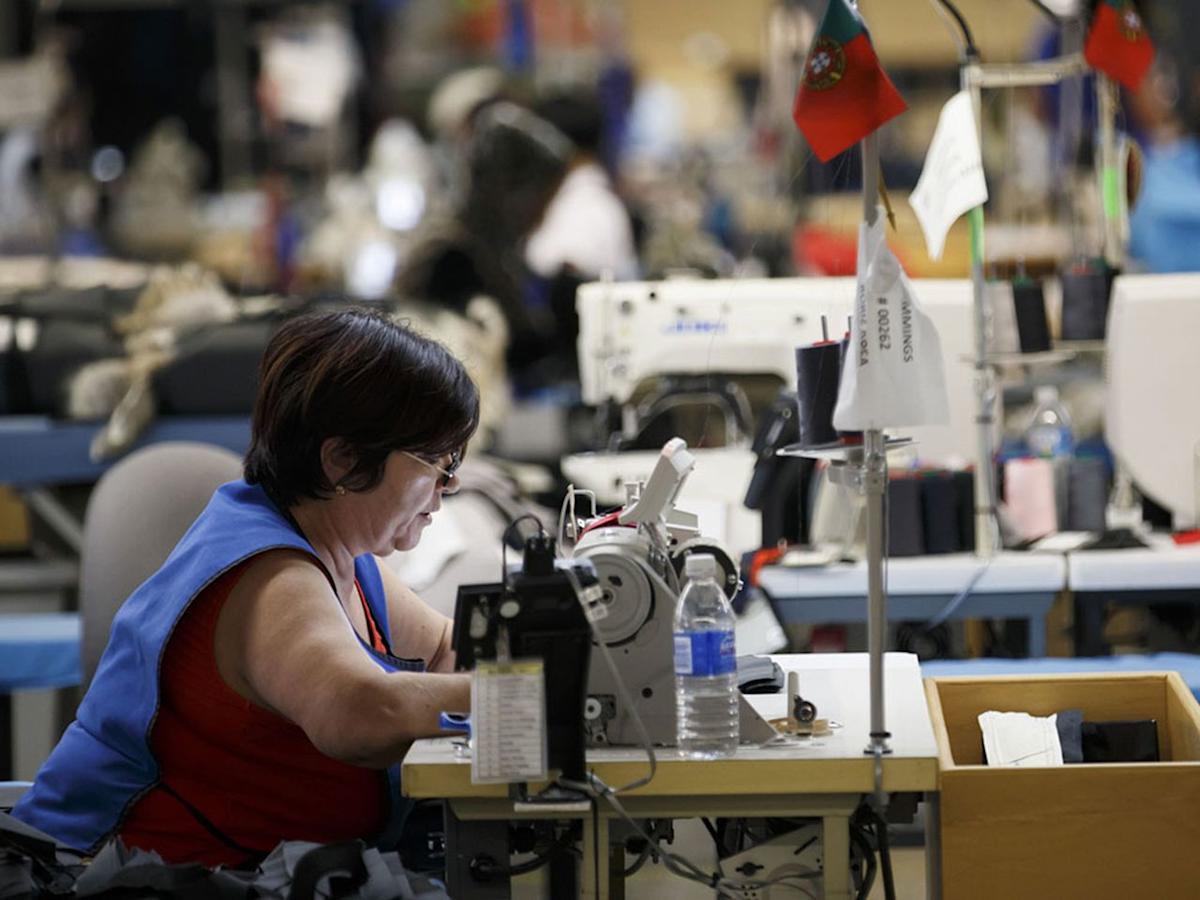Manufacturing sales contracted one per cent in August, but beat economists’ estimates. (Credit: Cole Burston/Bloomberg)
Canada’s economic growth in the third quarter could fall short of the Bank of Canada’s forecast given the latest contracting manufacturing sales data, says one economist.
“We continue to expect a weak third quarter, with growth on track to significantly undershoot the Bank (of Canada’s) one per cent forecast,” Alexandra Brown, North America economist at Capital Economics Ltd., said in a note.
Manufacturing sales contracted one per cent in August, according to Statistics Canada data released on Wednesday, although that beat estimates for a 1.5 per cent drop. Their value declined 1.5 per cent for the month.
Manufacturing sales fell in 12 of the 21 subsectors, with transportation down the most, 5.7 per cent from July, while the food sector shrank by 1.9 per cent.
In the transportation sector, aerospace parts sales fell the most, by 8.6 per cent, well off a rise of 6.9 per cent in July, which was a record monthly increase. Statistics Canada said the automotive sector posted “lower-than-typical seasonal sales” of parts and vehicles, which fell 5.2 per cent and 3.3 per cent, respectively, as production slowdowns hit plants in Ontario.
“Market uncertainty and the tariffs imposed by the United States have also contributed to irregular production schedules at some assembly plants,” the agency said in a release.
Canada’s automotive sector is still grappling with tariffs of 25 per cent on auto parts that are not compliant with the Canada-United States-Mexico Agreement and vehicles fully built in Canada.
But Brown said the manufacturing data for August held up better than what economists expected, providing a bit of a backstop to a rebound in factory sales in June and July, when they rose 0.3 per cent and 2.3 per cent, respectively.
It wasn’t all rosy, however.
“The available data point to a weak September,” he said, pointing out that new orders fell by 2.2 per cent in August and slowed to their lowest level of the year, while S&P Global Inc.’s manufacturing purchasing managers index (PMI) remained mired in “contractionary territory” in September.
The PMI dropped to a reading of 47 from 51 in February as the dangers that U.S. tariffs posed to Canada’s economy took hold. A reading below 50 on the PMI, a market conditions tracker developed by the Institute for Supply Management, indicates conditions are slowing, while a reading above implies they are growing.
Brown said month-over-month wholesale sales, which exclude petroleum, fell 1.3 per cent in August, contradicting a Statistics Canada flash gross domestic product (GDP) estimate for August that said wholesale sales would rise.
The outlook for Canada’s automotive manufacturing took another hit on Wednesday when Stellantis NV said it was moving production of a Jeep SUV to the U.S. from Ontario, throwing the future of its Brampton plant and 3,000 jobs into doubt.
“The news that Stellantis is shifting production of its newest Jeep models to the U.S. highlights the challenges facing the sector, suggesting limited upside going forwards,” Brown said.
One bright spot was that month-over-month aluminum sales rose 45.1 per cent in August, while primary metals sector sales rose 3.6 per cent.
The aluminum industry is among the sectors hardest hit by Donald Trump’s tariffs and faces a 50 per cent levy.
Capital Economics in late September forecasted third-quarter GDP to come in at 0.8 per cent on an annualized basis.
• Email: gmvsuhanic@postmedia.com

